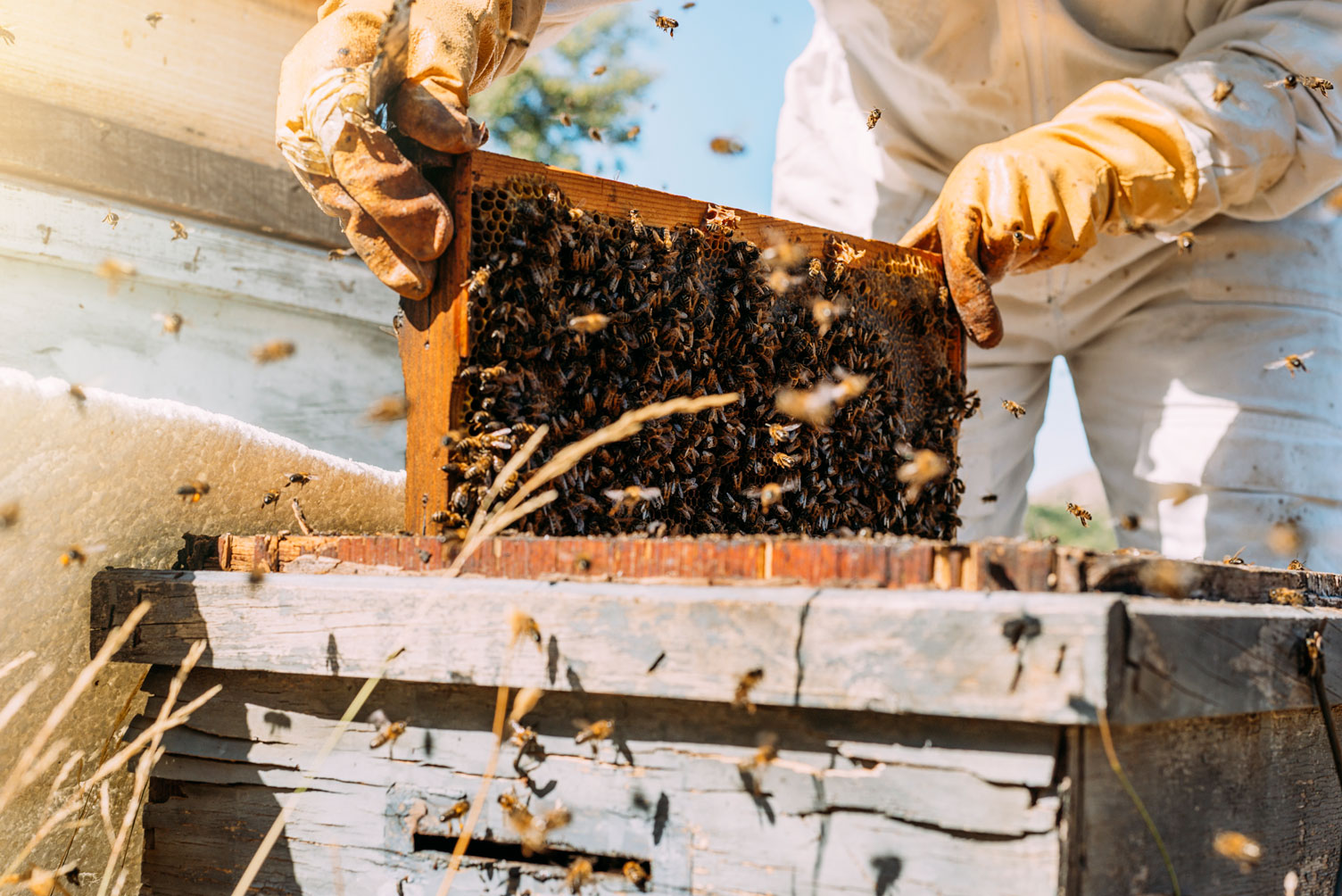At Burleson’s, we love talking about honey. The unique tastes of different varieties, how to cook with it, how to use it in all kinds of drinks, its nutritional benefits, even its value for skin care. You name it. Any question you have, we’re ready to talk about it.
Interestingly, some of the most common questions we hear are about where honey comes from. Most people know that it has something to do with bees. Beyond that, however, things get a little hazy. What are the bees actually doing that makes honey? And how does it make it from the beehive to the bottle?
Let’s start – just like honey does – with the bees themselves. The bees that make honey live in a hive. The hive is made of several flat wooden frames filled with honeycomb. The hive includes one queen, drone bees, and worker bees. The workers are the only bees to leave the hive, and they are the bees that are the most important to the production process. After spending the first three to ten days of their life in the hive, they spend the remainder of their five-to-six-week life procuring nectar from plants.
The workers bring this nectar back to the hive, place it in the comb, and then cover it with wax. These frames are then carefully removed by the beekeeper, who scrapes away the wax and places the frames into a centrifuge. The centrifuge spins the frames to force the honey out of the comb, and the beekeeper collects it in a drum or other container. Once the container is full, the beekeeper ships it to a packer or bottler.
The packer or beekeeper grades the honey based on color and flavor profiles. The flavor profile is determined by the nectar and where the hive has been placed. For example, beehives placed in orange groves will produce orange blossom honey, while beehives placed in alfalfa and clover fields traditionally produce a predominantly clover taste profile.
The packer will gently warm multiple drums – known as a production run – to liquefy the honey. This allows the packer to pump it and filter it through presses. Packers either strain or filter the honey to remove any impurities or foreign material. The packer then packages the honey in a variety of container sizes and delivers it to the retailer or end-user.

